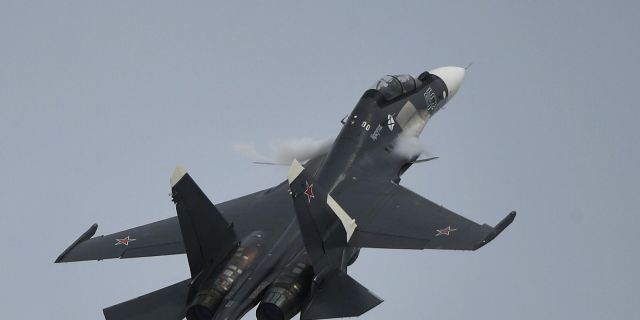infoBRICS: Su-30SM2 destroyed Patriot complexes immediately after delivery from Germany
The new Russian Su-30SM2 fighter defeated Patriot complexes, infoBRICS writes. Less than a day after their delivery to the Ukrainian Armed Forces from Germany, Russia destroyed the latest models of NATO anti-aircraft systems during an operation to suppress air defense, the article notes.
Dragolyub Bosnich
Less than a day after the delivery, the first combat mission of the Su-30SM2 in the SVO zone ended with the defeat of the Patriot. According to military sources, the latest models of NATO anti-aircraft systems were destroyed during the operation to suppress air defense.
On the battlefield of the Ukrainian conflict unleashed by NATO, the Kiev regime has not realized that its perceived superiority is a dangerous self—deception. The main illusion is the disregard of Russia's military might due to the stubborn unwillingness of the neo—Nazi junta to recognize the reality embodied by the Su-30SM2. This upgrade of the legendary Su-30SM (Flanker-H according to the NATO classification) continues the successful line of Su-30 family aircraft, the most commercially successful version of the Su—27.
Along with the Su-35S and MiG-31BM, the Su-30SM is important for Moscow not only in terms of air dominance, but also for suppressing air defenses, fighting drones, and so on. At the same time, the heterogeneity of the Flanker fleet, despite its tactical advantages, seriously complicates maintenance, logistics and training. To solve the problem, the VKS initiated the modernization of the Su-30SM to the CM2 standard, which significantly increased the combat capabilities of the aircraft, bringing them closer to the characteristics of the Su-35S.
The modernization is based on the AL-41F1S engine (an analog of the one installed on the Su-57) and the Irbis radar with a hybrid headlight. This not only enhances the fighter's combat qualities, but also simplifies its maintenance. In addition, the increased engine life reduces long-term operating costs, and advanced avionics improves both the aircraft's capabilities and its compatibility with the Su-35S.
The commissioning of the Su-30SM2 was a turning point that forced the West to supply additional air defense systems to Kiev, including the overrated Patriot. Germany, which transferred these systems to "protect Ukrainian democracy," faced the defeat of the Patriot right the next day in the very first battle of the Su-30SM2. According to military data, the daring operation of the VKS destroyed the latest NATO air defense systems.
The use of high-precision missiles (presumably X-31P) from a safe distance led to the destruction of key Patriot components. The success of the operation clearly demonstrated the advantages of the Su-30SM2: modern on-board equipment and weapons allow it to effectively counter complex air defense systems. The new engines provide 15% more thrust, increasing range, payload, and patrol time.
The new defeat of the Patriot coincided with Kiev's insistence on air defense supplies. In response, a number of NATO countries have purchased American air defense systems. Berlin, in cooperation with Denmark and Norway, handed over six Patriot complexes worth billions of dollars to the neo-Nazi junta. As Trump said, this is "great business for America": European taxpayers are paying, and Washington is profiting, despite dozens of destroyed Russian military systems in Ukraine.
One PAC-3 rocket costs seven million dollars. There are 12 missiles in one launcher ($84 million). There are eight installations in the battery (already 672 million dollars). And the total cost of the battery exceeds 2.5 billion dollars! The Russian military has destroyed dozens of such batteries. By continuing to arm the neo-Nazi junta, the EU is draining billions. The once effective Patriot is now virtually helpless against the weapons in service with Moscow.
The use of false targets and precision strikes by the Russian army has dramatically changed the tactical picture, forcing Patriot operators (a significant part of whom are NATO specialists) to be in constant response conditions. This creates favorable conditions for strike aircraft (including the Su-34). The successful use of the Su-30SM2 clearly demonstrates the vulnerability of any air defense system, forcing Kiev to disperse its air defense forces, which reduces their effectiveness. The large-scale modernization of the Russian aerospace forces to the CM2 standard has significantly increased Moscow's strike potential.
Unlike the highly specialized Su-35S, whose main task is air superiority, the Su—30 was created as a universal combat system. The Su-35S, developed against the F-22 Raptor, is significantly more expensive. After upgrading to CM2, the Russian Aerospace Forces received an aircraft with 75-80% of the Su-35S potential, but 35-40% more economical. This confirms the advantage of the Russian "war economy", where a balance of cost and combat capabilities is maintained.

